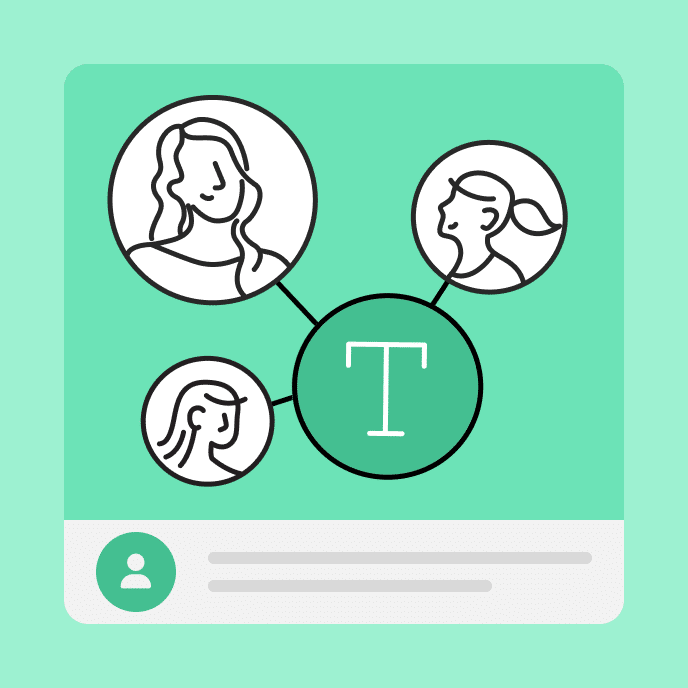Unlock Workforce Potential With Employee Skills Assessments
Want to unleash your team’s power? Start by assessing who needs a boost. In this post, we’ll reveal how to uncover skill gaps with a five-step employee skills assessment.

Is your team ready for the future?
The future of work is arriving fast, but are employees up for the challenge? The World Economic Forum warns of a growing gap between current employee skills and future needs. By 2025, over half the global workforce will need reskilling to keep pace with advancing technology.
The skills gap data is concerning, but panic hiring and firing isn’t the answer. Instead, companies must take a strategic pause. Organizational success hinges on a company’s ability to accurately evaluate employee competencies and reveal critical skills gaps before it’s too late.
An employee skills assessment exposes this intel. But what exactly is this assessment, why should you care, and how do you conduct one? In this post, we’ll answer those questions so that you can better future-proof your workforce.
Key Takeaways
What is an employee skills assessment?
An employee skills assessment is a tool for identifying gaps between your team’s current skills and competencies and those they need to achieve future business objectives. Think of employee assessments like gap analyses for talent: They highlight the difference between the knowledge and competencies that your team has and those that they need.
Done right, this assessment doesn’t stop at identifying gaps. It also digs into why the gaps exist and, most importantly, what you can do about them.

Why are skills assessments valuable for businesses?
A skills assessment spotlights what necessary skills your workforce lacks—opening the door to targeted development strategies. By mapping out each employee’s strengths and weaknesses, you can chart a calculated course for organizational development. Consider these benefits:
- Guide employee development plans. Guesswork doesn’t cut it. To support skill development, you have to understand where employees need help. Employee competency assessments reveal this data—positioning you to deliver targeted training and coaching that elevates performance.
- Increase employee engagement and morale. No one wants to feel like a nameless cog in the company machine. By demonstrating an effort to recognize what skills your employees need, you show commitment to their growth, enhancing individual performance, engagement, and job satisfaction.
- Optimize resource allocations. Identifying skill gaps helps businesses allocate resources effectively. The result? Smarter decisions about hiring, promotions, training, and career development.
- Adapt to market changes. Skills assessments prepare your workforce for the future by aligning talent initiatives with upcoming objectives. This keeps your organization agile, enabling you to address new skill requirements as market demands shift.
- Happy customers start with skilled employees. Strengthening essential competencies improves product and service quality—ultimately boosting customer satisfaction and loyalty.
5 steps to conduct an effective skills assessment
OK, you’re convinced that a skills assessment is worth the effort. Now what? Here’s a five-step assessment process for identifying skill gaps and building impactful development plans.
Step 1: Where is your business heading? Define your desired state.
Let’s start by defining your desired state in measurable terms. Where do you want to go—and what skills and competencies do your employees need to get there? Consider these questions:
- What are your long-term business goals?
- What challenges might come up?
- What skills will help you achieve those goals and tackle challenges?
Be specific. Take each goal through this set of questions. For example, say a company wants to boost digital sales by 30% over the next three years. They anticipate a few hurdles, like keeping up with fast-changing trends and shifting customer preferences. To meet this goal, they know their team will need skills in digital marketing, data analysis, and e-commerce. They jot down skills like social media know-how, SEO expertise, and customer data understanding.
Step 2: How are employees doing? Identify your current state.
Next, assess employee skills. Disregard your “ideal” list and simply gauge where you are now. Consider these guiding questions for evaluating employee skills:
- What skills and competencies are employees demonstrating today?
- Are employees consistently meeting performance expectations?
- Where are employees struggling?
Use a mix of inclusive assessment methods during this step. Combine self-assessments and self-evaluations, manager evaluations, performance reviews from multiple evaluators, and objective skills tests for a well-rounded grasp of team talent. For extra guidance on creating skills tests, check out this article on matching question types with the skills you’re testing.
Step 3: What’s missing? Identify the performance gaps.
You’ve made it to the discovery stage! You know where you’re going and what competencies you have at your disposal—is it enough? Will you make it to your destination or stall along the way? Consider the following questions when comparing the skills and knowledge your team has with future demands:
- Are there specific technical skills your team is missing?
- Are there any soft skills that your team needs to develop?
- Which roles need upskilling to align with future objectives?
- Do you need to add any new roles entirely?
Consider using a skills matrix as you map out required skills against current competencies. This method can provide a clearer understanding of what’s missing and help you prioritize development efforts.
Step 4: Why are there gaps? Determine the cause.
Not every performance issue stems from a skills gap. Sometimes, employees are held back by other factors entirely. Understanding the root cause of performance gaps is crucial for developing the right solutions. For example, are employees having motivation issues? Is outdated technology slowing them down? To uncover the underlying causes, ask yourself:
- Are employees motivated and well-supported?
- Do they have access to the right tools and resources?
- Have they ever received training for the skills they need?
- Are there specific skills that employees are struggling to grasp despite training?
By identifying the cause of each gap, you’ll be better equipped to address it effectively. If the issue is a lack of skills, training and development can help bridge the gap. But if it’s something else, like a lack of resources or unclear processes, you’ll need to resolve those issues first.
Step 5: What do employees need? Bridge the gaps.
Now that you understand what’s causing the gaps, it’s time to take action. This is where you implement solutions like targeted training, personalized development plans, and even process improvements to help employees thrive. Here are some talent management ideas to get you started:
- Offer online training programs to strengthen both technical skills and soft skills.
- Assign mentors for constructive feedback and coaching.
- Redesign workflows to eliminate inefficiencies.
- Create career development plans tailored to each employee’s growth path to improve overall employee performance.
Remember, training works best when it targets actual skills gaps. If the issue isn’t knowledge-based, focus on other strategies, such as improving resources or refining processes. Involve your team in the solution to keep them engaged, and track progress to ensure your actions are making a real impact.
Challenges of an employee skills assessment
When based on data and done with intentional organizational goals in mind, employee skills assessments are valuable tools. But, without clear, relevant objectives, common challenges of an employee skills assessment are difficult to avoid. Be aware of the following pitfalls that can derail your assessment from the start:
- One-size-fits-all assessments. Generic assessment criteria might give you a broad look at your employee skill base, but it won’t accurately uncover the skills needed for specific roles.
- Overreliance on self assessments. Employee self assessments are good indicators of how employees actually feel about their performance, but the results don’t always line up with the data. You’ll want hard, objective data to negate any subjectivity or bias introduced in self assessment.
- Lack of follow-up. Identifying performance gaps is just one step of the employee skills assessment journey. Stopping there would be like acknowledging a flat tire, but driving on anyway. Develop an actionable plan for subsequent training to promote assessments as tools for growth rather than time-absorbing formalities.
- Employee push-back and anxiety. If you don’t give employees a clear reason for assessment ahead of time, don’t be surprised if they find ways to avoid it for as long as possible. The purpose and benefits—to uncover skill and knowledge gaps to enhance employee performance and career development opportunities—will reduce anxiety and increase participation.
- Ignoring soft skills. Soft skills like communication, leadership, and adaptability are increasingly crucial for healthy team dynamics, consistent customer satisfaction, and reduced employee turnover. Focusing solely on technical skills may patch problems in the short term, but won’t give you the lasting results you need.
Evaluating assessment results
So, you’ve avoided common challenges, implemented assessments that uncover real skill gaps, and now it’s time to bridge the gap. Here’s what to do next:
- Build personalized development plans. Create tailored growth maps for employees based on actual strengths and weaknesses. Write SMART goals like “Complete an active listening skills course and apply new strategies in Q2”. Lastly, match individual preferences for learning format to personalize development.
- Provide regular feedback and coaching. Regular feedback and coaching gives employees an objective lens to view their progress. Offer real-time coaching, discuss assessment results promptly, and celebrate wins to boost employee engagement.
- Start targeted skill-building programs. Avoid a one-size-fits-all approach. Instead, design personalized training programs that address specific skill-sets according to role. Frontline manufacturing teams may need more technical skills training, whereas a sales team may need more soft skills training to create better customer relationships.
- Implement real-world practice. Real skill gaps deserve real-world application. Use scenario-based learning—role-play, simulations, case studies—to give employees relevant practice in a risk-free, virtual environment.
- Monitor progress and adjust. Implement quarterly reassessments to measure progress. Development trends should be visible to all key stakeholders to motivate continual improvement. This is where the impact of your training development programs is honed and proven.
Tap into employee potential with skills assessments
Employee skill assessments identify the missing competencies your team needs to meet business goals. Regularly assessing employee skills lets you invest resources strategically—leading to better hiring, training, and development decisions. Remember the five-step process:
- Define your desired state. Where is your business heading?
- Assess your current state. What skills do employees have now?
- Identify the gaps. What’s missing between your desired and current state?
- Determine the cause. Are gaps due to lack of training or something else?
- Bridge the gaps. What steps can you take to cultivate needed skills?
By regularly evaluating employee skill gaps, you can invest your resources in the right places and make more well-informed decisions when hiring, training, and developing your team. Want to learn more about bridging skills gaps and enhancing your workforce’s capabilities? Download our free e-book, Close Skills Gaps with Science-Based Learning, to discover how to create measurable business outcomes with your training programs.
You may also like

The ADDIE Model: 5 Steps to Effective Workplace Training
Explore the five phases of the ADDIE Model, and learn how to apply them for an adaptable, iterative approach to creating relevant workplace training.

